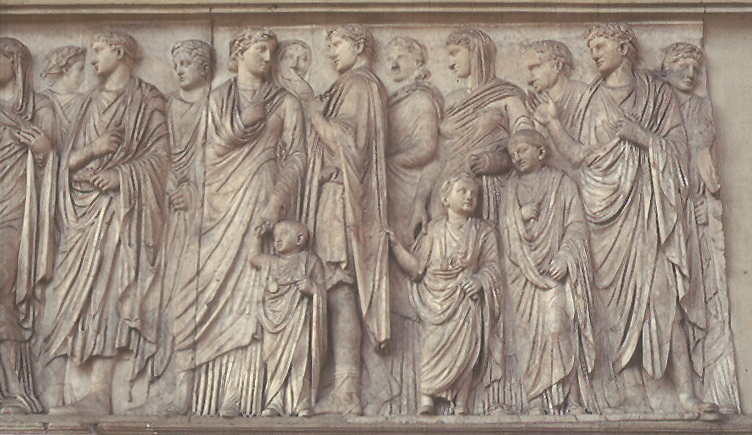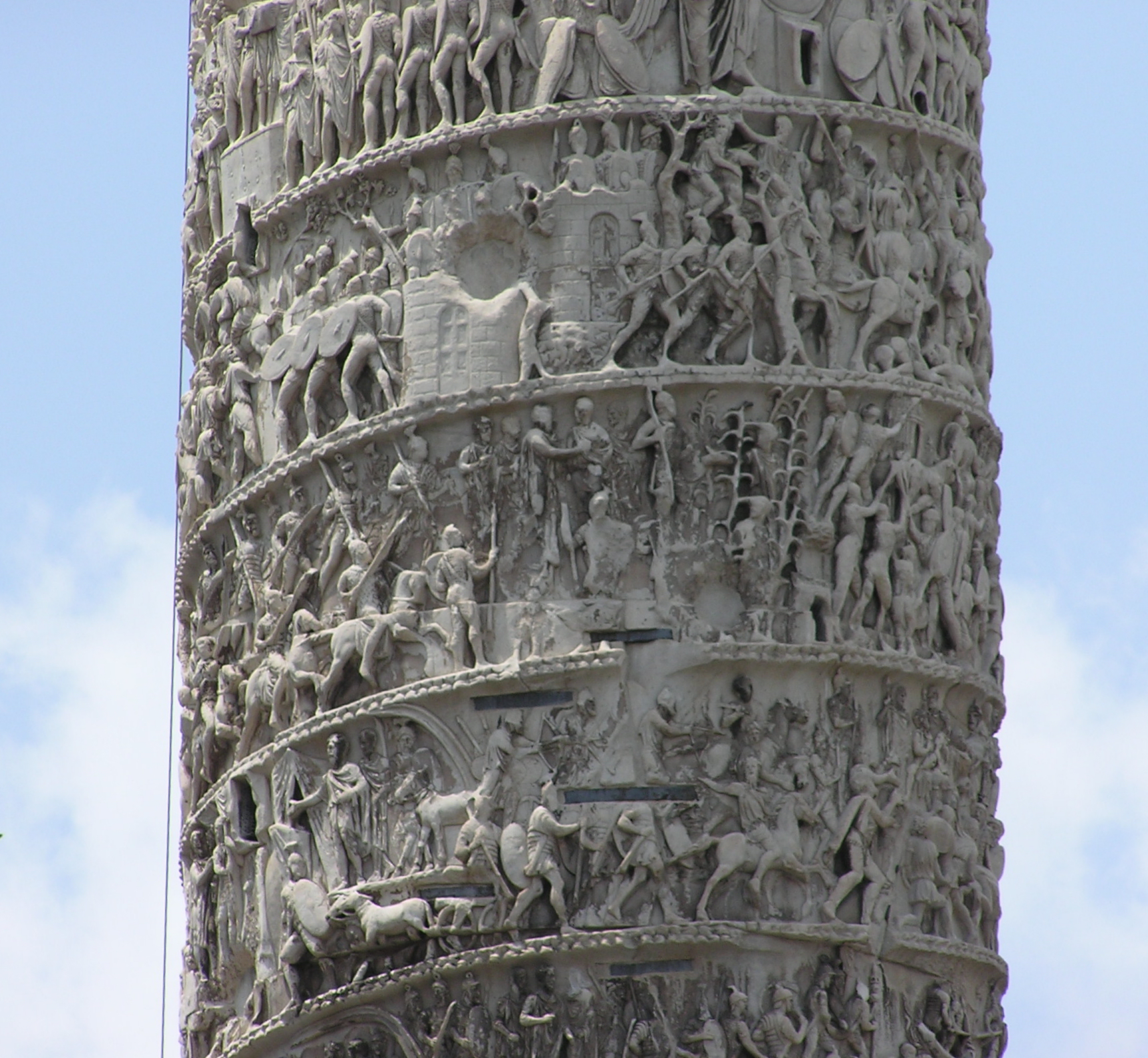Ancient Roman Bas-Reliefs:
Significant Examples
The art of sculptured bas-reliefs was a Roman statuary genre of most significance. While this medium allowed the artist to represent complex scenes, the remaining sculpture can tell us much about the Roman lifestyle, important events and military equipment & tactics.
Examples of Roman Bas-reliefs
The settings of Roman bas-reliefs are for the most part historical, and developed in a narrative way characteristic of the Romans. With Hellenistic appearance or of completely different style, the architectural reliefs would always represent military campaigns, as for example at the column of Trajan, or commemorative events and religious ceremonies, just like the ones at the Ara Pacis Augustae or Altar of Augustan Peace, built to honor Augustus.

Processional frieze of the Ara Pacis
At the Ara Pacis's bas-reliefs, the imperial procession is bringing offerings towards the altar, with certain resemblance to the reliefs of the Parthenon. Not only the procession scenes can be similar to those of the Greek Temple of Athena, but also the characteristic way the forms are finished and ordered on the cut limestone.

Arch of Titus Roman reliefs with spoils from Jerusalem
At the Arch of Titus, the most significant bas-reliefs occupy the interior walls. A display of a military parade of the victorious Romans after the conquest of Jerusalem, carrying their banners high and showing the sacred objects stolen from the Jews: a seven-armed menorah or candelabrum, including the Table of Showbread, and ritual trumpets. The achieved perspective of the quadriga turning to the right and the great details of both wall reliefs makes them masterpieces of classical sculpture.

Titus triumph relief at the Arch of Titus
Photography by Cassius Ahenobarbus
At the Column of Trajan there can be found bas-reliefs with almost 2500 sculptured figures that provides us an extraordinary amount of valuable information about the epoch. The style of the reliefs is influenced by the Eastern art of the empire, with a more archaic and disproportionate aesthetics than the classical school, but with a look rather impressive considering the fact that the column was completely painted down to the last detail.

Trajan's Column - East Side (Click to Expand)
Photography by Matthias Kabel
On the other hand, the Column of Marcus Aurelius has on display bas-reliefs of more classical style. The figures are represented with a great sense of order and elegance, characteristic of his reign, a style missing at the Column of Trajan.

Detail of bas-relief from Column of Marcus Aurelius
Last but not least, bas-reliefs were not only found on Roman architecture but in its majority on well-preserved sarcophagi and grave altars. In general, family members and memorable moments of the deceased’s life were widely depicted on stone as a sign of veneration.

Roman Bas-relief of Ludovisi Battle sarcophagus
Should you be inspired by the magnificence of this sculptural art, our collection of Roman bas-reliefs for sale is a delight for the enthusiasts of the once great Ancient Rome's art.






Leave a comment